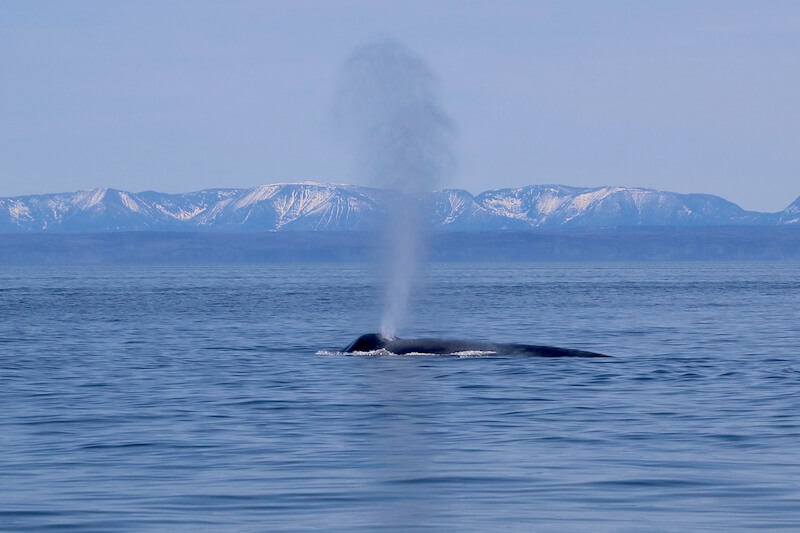“Finally, our first observation of 2020!” writes in an observer residing in Cap-des-Rosiers in the Gaspé Peninsula. On March 29, a sunny morning offers excellent visibility. From their own home, she and her partner spot two fin whales roughly 2 nautical miles from the coast. “They were calmly swimming eastward, occasionally floating on the surface for a few moments. They were accompanied by the first gannets we’ve seen this year. As far as we’re concerned, this is an official indicator of the start of spring!” they exclaim. That afternoon, two other lucky individuals write to us. They observed at least five individuals, including two fin whales and a blue whale. The other animals were too far offshore to identify. A blue whale and an unidentified large rorqual were also observed from Cap-des-Rosiers on March 30. The absence of ice in the Gulf bodes well for more observations in the near future.
On the other side of the point, seals swim in the ice-free waters of Gaspé Bay. They are less abundant than they were last week: one birder had tallied over a hundred in a single observation! This week, visibility is not as good. Perhaps the marine mammals are obscured by the snow squalls?
In and around Tadoussac side, beluga sightings are on the rise. Three research assistants from the Group for Research and Education on Marine Mammals (GREMM) take advantage of sunny skies on March 28 to strap on their snowshoes and climb Mount Adéla-Lessard (keeping their distance from one another, of course). From the summit, they scan the sea. Two white dots regularly return to the surface: belugas! The white whales are swimming in a tide rip.
Still in Tadoussac, a harbour seal is lounging on the beach near Pointe Rouge. Seals like to take advantage of rocks, patches of ice or beaches to rest. In order to give them a chance to “charge their batteries”, strollers must maintain a minimum distance of 50 metres.
From the window of her living room, a resident of Saint-Irénée (Charveloix region) regularly enjoys swimming belugas, and always two at a time! As belugas are very social, it is rather rare to observe a solitary individual.
News from down South
North Atlantic right whales have started to make their way north. Researchers from the Center for Coastal Studies carry out flights over the Cape Cod Bay region to track their migration. To date, no mother-calf pairs have been observed yet, but they are never amongst the first to arrive. Migrating with a newborn takes a little longer, as the calf must gain strength and fine-tune its swimming skills. When will we see them in the Gulf?





